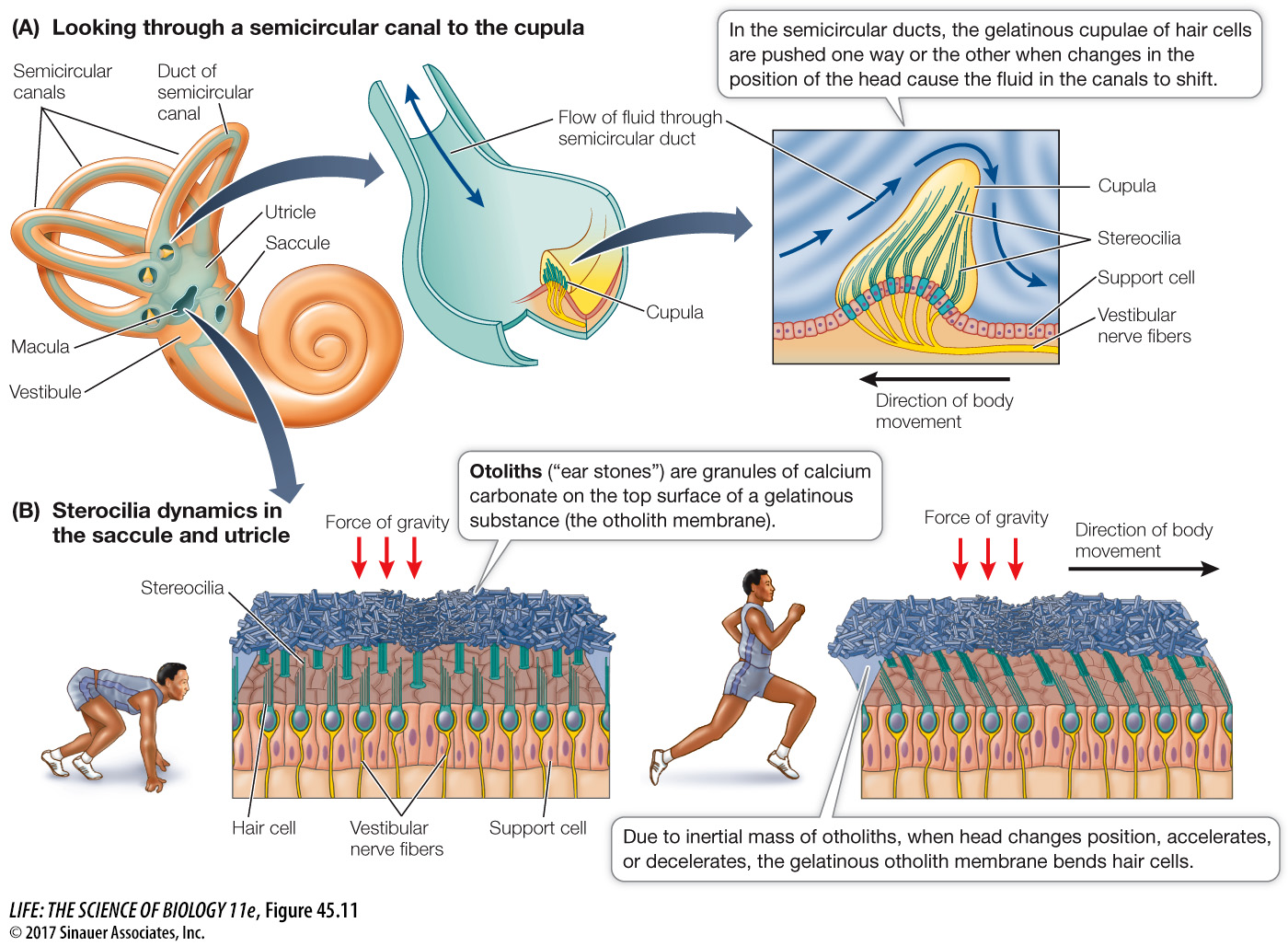The vestibular system uses hair cells to detect forces of gravity and momentum
Hair cells in the vestibular system of the inner ear detect the position and movement of the head—
In the mammalian inner ear, the vestibular system consists of three bony semicircular canals and a bony chamber called the vestibule. Within each canal is a membranous semicircular duct, and within the vestibule are the membranous saccule and the utricle. The ducts and the saccule and utricle are filled with fluid. In the semicircular ducts, the fluid shifts when the head changes position (Figure 45.11A). Since the three semicircular canals have different orientations, the fluid in their ducts responds differentially to the direction of movement. Projecting into the base of each duct is a cupula, a gelatinous swelling enclosing a cluster of hair cell stereocilia. When the shifting fluid pushes on the cupula, it bends the stereocilia and causes a graded potential in the hair cell membranes.

The stereocilia in the saccule and utricle are bent in a different way. These stereocilia are embedded in gelatinous membranes that contain otoliths (“ear stones”) which are crystals of calcium carbonate. When the head changes position or when it accelerates or decelerates, gravitational forces are exerted on the otoliths and the stereocilia bend (Figure 45.11B).
As in the cochlea, the hair cells of the vestibular system do not fire action potentials, but they release neurotransmitter at synapses with sensory neurons, which in turn fire action potentials.
Motion sickness is a common malady experienced as seasickness or car sickness. This condition occurs when the vestibulular system and the visual system produce conflicting information. The vestibular system may be indicating movement when the visual system is not, or vice versa.
Activity 45.2 Mechanoreceptors Simulation
www.life11e.com/